Current management of fecal incontinence
- PMID: 24355892
- PMCID: PMC3783075
- DOI: 10.7812/TPP/12-064
Current management of fecal incontinence
Abstract
Objective: To review the management of fecal incontinence, which affects more than 1 in 10 people and can have a substantial negative impact on quality of life.
Methods: The medical literature between 1980 and April 2012 was reviewed for the evaluation and management of fecal incontinence.
Results: A comprehensive history and physical examination are required to help understand the severity and type of symptoms and the cause of incontinence. Treatment options range from medical therapy and minimally invasive interventions to more invasive procedures with varying degrees of morbidity. The treatment approach must be tailored to each patient. Many patients can have substantial improvement in symptoms with dietary management and biofeedback therapy. For younger patients with large sphincter defects, sphincter repair can be helpful. For patients in whom biofeedback has failed, other options include injectable medications, radiofrequency ablation, or sacral nerve stimulation. Patients with postdefecation fecal incontinence and a rectocele can benefit from rectocele repair. An artificial bowel sphincter is reserved for patients with more severe fecal incontinence.
Conclusion: The treatment algorithm for fecal incontinence will continue to evolve as additional data become available on newer technologies.
Figures
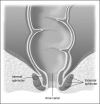

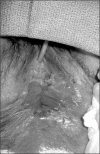


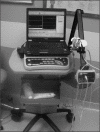
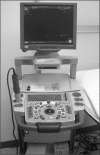



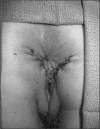

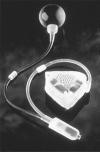



Similar articles
-
Current management of fecal incontinence: choosing amongst treatment options to optimize outcomes.World J Gastroenterol. 2013 Dec 28;19(48):9216-30. doi: 10.3748/wjg.v19.i48.9216. World J Gastroenterol. 2013. PMID: 24409050 Free PMC article. Review.
-
[Current status of the treatments of fecal incontinence].Zhonghua Wei Chang Wai Ke Za Zhi. 2014 Dec;17(12):1244-50. Zhonghua Wei Chang Wai Ke Za Zhi. 2014. PMID: 25529961 Chinese.
-
Sacral nerve stimulation for fecal incontinence related to external sphincter atrophy.Dis Colon Rectum. 2012 Jul;55(7):797-805. doi: 10.1097/DCR.0b013e3182538f14. Dis Colon Rectum. 2012. PMID: 22706133
-
Fecal Incontinence: Etiology, Diagnosis, and Management.J Gastrointest Surg. 2015 Oct;19(10):1910-21. doi: 10.1007/s11605-015-2905-1. Epub 2015 Aug 13. J Gastrointest Surg. 2015. PMID: 26268955 Review.
-
Treatment options for fecal incontinence.Dis Colon Rectum. 2001 Jan;44(1):131-42; discussion 142-4. doi: 10.1007/BF02234835. Dis Colon Rectum. 2001. PMID: 11805574 Review.
Cited by
-
Association between pelvic floor disorders and hernias.Int Urogynecol J. 2021 Nov;32(11):3017-3022. doi: 10.1007/s00192-021-04762-6. Epub 2021 Mar 17. Int Urogynecol J. 2021. PMID: 33730234 Free PMC article.
-
Evidence-Based Update on Treatments of Fecal Incontinence in Women.Obstet Gynecol Clin North Am. 2016 Mar;43(1):93-119. doi: 10.1016/j.ogc.2015.10.005. Obstet Gynecol Clin North Am. 2016. PMID: 26880511 Free PMC article. Review.
-
Impact of fecal incontinence and its treatment on quality of life in women.Womens Health (Lond). 2015 Mar;11(2):225-38. doi: 10.2217/whe.14.66. Womens Health (Lond). 2015. PMID: 25776296 Free PMC article. Review.
-
Bowel Urgency in Ulcerative Colitis: Current Perspectives and Future Directions.Am J Gastroenterol. 2023 Nov 1;118(11):1940-1953. doi: 10.14309/ajg.0000000000002404. Epub 2023 Jun 12. Am J Gastroenterol. 2023. PMID: 37436151 Free PMC article. Review.
-
Generation of myogenic progenitor cell-derived smooth muscle cells for sphincter regeneration.Stem Cell Res Ther. 2020 Jun 12;11(1):233. doi: 10.1186/s13287-020-01749-w. Stem Cell Res Ther. 2020. PMID: 32532320 Free PMC article.
References
-
- Goode PS, Burgio KL, Halli AD, et al. Prevalence and correlates of fecal incontinence in community-dwelling older adults. J Am Geriatr Soc. 2005 Apr;53(4):629–35. DOI: http://dx.doi.org/10.1111/j.1532-5415.2005.53211.x. - DOI - PubMed
-
- Quander CR, Morris MC, Melson J, Bienias JL, Evans DA. Prevalence of and factors associated with fecal incontinence in a large community study of older individuals. Am J Gastroenterol. 2005 Apr;100(4):905–9. DOI: http://dx.doi.org/10.1111/j.1572-0241.2005.30511.x. - DOI - PubMed
-
- Whitehead WE, Borrud L, Goode PS, et al. Pelvic Floor Disorders Network Fecal incontinence in US adults: epidemiology and risk factors. Gastroenterology. 2009 Aug;137(2):512–7. 517.e1–2. DOI: http://dx.doi.org/10.1053/j.gastro.2009.04.054. - DOI - PMC - PubMed
-
- Perry S, Shaw C, McGrother C, et al. Leicestershire MRC Incontinence Study Team Prevalence of faecal incontinence in adults aged 40 years or more living in the community. Gut. 2002 Apr;50(4):480–4. DOI: http://dx.doi.org/10.1136/gut.50.4.480. - DOI - PMC - PubMed
-
- Cook TA, Mortensen NJ. Management of faecal incontinence following obstetric injury. Br J Surg. 1998 Mar;85(3):293–9. DOI: http://dx.doi.org/10.1046/j.1365-2168.1998.00693.x. - DOI - PubMed
Publication types
MeSH terms
LinkOut - more resources
Full Text Sources
Other Literature Sources
Medical
Miscellaneous

